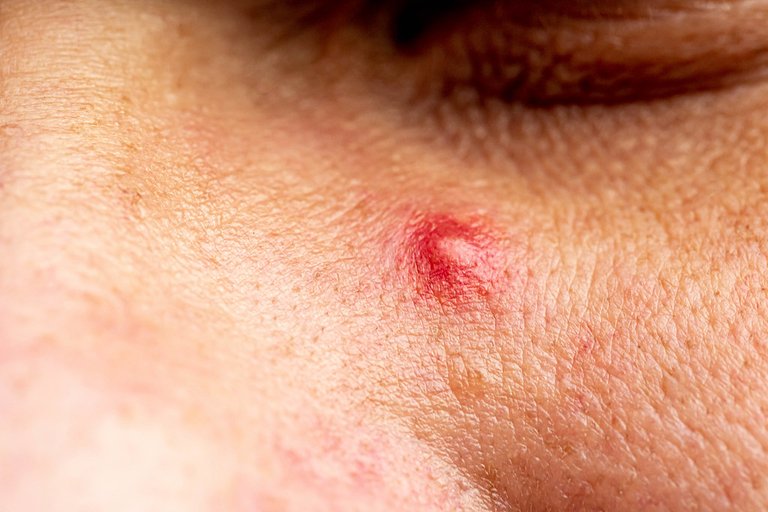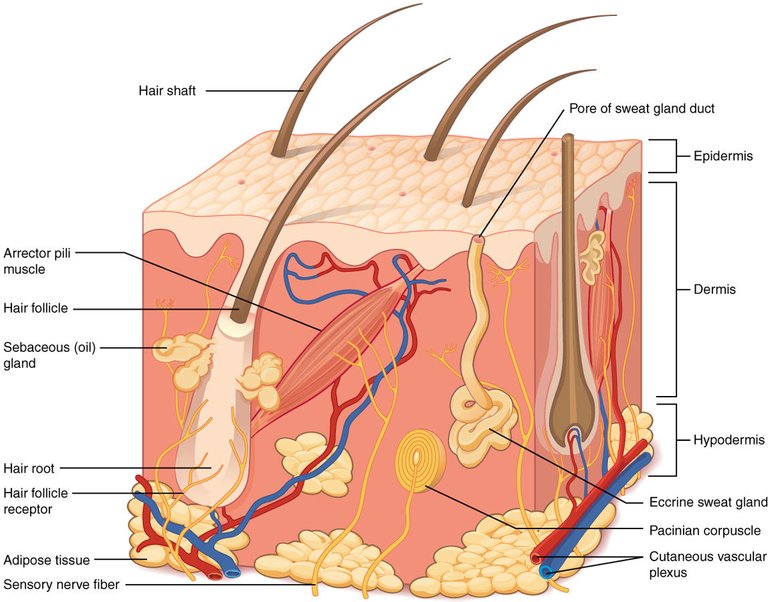Understanding Pimples: Causes, Differences from Acne, and Effective Treatment Options
In the words of my friend, "Pimples always seem to make an appearance at the most inconvenient times in life – like your birthday, your first day at work, or even your wedding day." We've all experienced that moment when a pimple pops up, causing discomfort and frustration. But have you ever wondered why pimples occur and how to get rid of them?
Our skin is made up of hair follicles which we also refer to as pore, and within the follicle is the Sebaceous gland that produces oily substances known as Sebum to the skin keeping the hair and body moiturized. When the hair follicle get clogged with dead skin cells and oils, a blockage is created to the Sebum which is still being created but trapped within the follicle making it become enlarged leading to Acne.

Flickr
Before we delve further, it's essential to note that the terms "pimple" and "acne" are often used interchangeably, but they aren't the same thing. Pimples are a symptom of acne, which is a dermatological condition affecting a significant portion of the world's population, with approximately 90% experiencing it at some point in their lives. While acne can affect people of any age, it's most prevalent among teenagers during puberty due to hormonal changes. During this period, the skin thickens, and the sebaceous glands produce more sebum.
The skin is an antidehydrating insulating covering of the body that protects the internal body against microorganism, UV light, and gravity. It also help to synthensize vitamine D for the convertion of calcium for healthy bones. The average skin square inch holds more than 1000 nerve ending, 600 sweat gland, and 20 blood vessels. The skin, made of the epidermis, the dermis, and the hypodermis. The epidermis is made up of keratinocytes, it is the outermost layer of the skin and it ismade of up 5 layers which are the Stratum germinativum where cell division occur, the stratum mucosa, stratum spinosum, and stratum granulosum, and the stratum corneum where dead cells exists.
The average time taken for skins to divide, die and shed off is about 28 days. The epidermis is binded to the dermis which is made up of the papillary and the reticular layer. The dermis is made up of blood vessels which is responsible for regulating the temperature of the skin, where it increases the temperature of the skin to allow heat escape of reduce the heat leaving the body so as to cool the body. The dermis is made up of special nerves and nerve structures which are connected to different hair follicles. The hypodermis or the subcuteneous tissues which helps to store fat for insulating and cushioning internal organs and bones from injury.
When skin cells and sebum block the pore opening, it forms a comedone. If a bacterium called Propionibacterium acnes (P. Acne) feeds on sebum but encounters a blockage, it multiplies anaerobically, leading to skin inflammation. White blood cells rush to the area to combat the infection, and when they die, they mix with sebum and dead skin cells, forming pus. Depending on where the blockage occurs, you may develop blackhead or whitehead pimples – blackheads when the blockage is on the skin surface and whiteheads when it's beneath the skin.
Pimples can arise due to increased testosterone levels during puberty, which boost sebum production. Stress can also contribute, as cortisol, a stress hormone, increases inflammation in the body. Personal experiences vary; some individuals, like myself, may have had few pimples throughout their lives, possibly due to lower stress levels and dry skin, without the use of any skincare products.
For minor breakouts, using soap to remove excess oil and exfoliating to prevent pore blockages can be helpful. However, when dealing with acne, it's a different story. Acne often has genetic and hormonal components. Treatment options include Benzoyl Peroxide to eliminate acne-causing bacteria, salicylic acid to remove dead skin blockages, and retinoids, which reduce sebum production. Establishing a regular skincare routine is crucial, as treating your skin with care can make a significant difference.
Read More
https://www.ncbi.nlm.nih.gov/books/NBK499819/
https://www.niams.nih.gov/health-topics/acne
https://www.ncbi.nlm.nih.gov/books/NBK470464/
https://www.ncbi.nlm.nih.gov/books/NBK441980/
https://www.ncbi.nlm.nih.gov/books/NBK83685/

Thanks for your contribution to the STEMsocial community. Feel free to join us on discord to get to know the rest of us!
Please consider delegating to the @stemsocial account (85% of the curation rewards are returned).
Thanks for including @stemsocial as a beneficiary, which gives you stronger support.